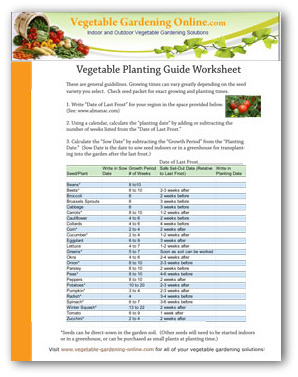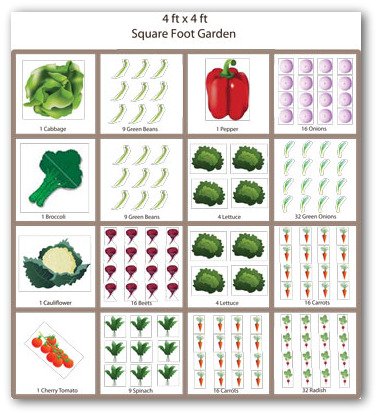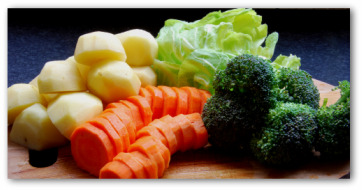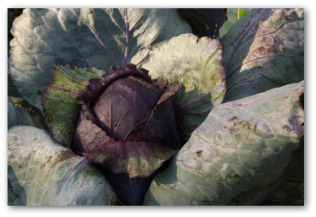Growing Cabbage In Your Home Garden
Here are some easy tips and plans for growing cabbage plants, German Red Cabbage, Kale and other fall vegetables and crops.
How to grow, plant and harvest cabbage and other members of the brassica family of vegetables.
Design Your Own Vegetable Garden Layout Using our Free "Vegetable Garden Planner" Software!
Brassicas include radishes, turnips, rutabagas, cabbages, cauliflower, canola, rape and kale.
Other fall vegetables include collards, spinach, Brussels sprouts, leeks, lettuce, parsips, and garlic.
These hardy vegetables don't mind cool weather or frost.
Growing Cabbage Plants
and Seeds
Growing cabbage plants or seeds is easy in your home vegetable garden.
These delicious vegetables can be planted in the ground, in a raised vegetable garden, or in a traditional in-ground garden.
They are easy to grow and care for.
They can be grown in an organic vegetable garden using heirloom seeds if desired.
They are a great way to make use of your own organic fertilizer from your compost pile, as they are heavy feeders, and do like nice rich soil.
Vegetable gardening with cabbage is a great way to go!
Download Free Garden Planning Worksheets, Garden Diary, Zone Chart, Or Planting Guide
Cabbage Plants Grow Best in Cool Weather
The best time to plant seeds for growing cabbage is between the months of March and June, or in the cool fall months of September and October depending on your climate.
Plant cabbages seeds or small plants at 3 to 4 week intervals.
What is ideal about this planting schedule is it supplies fresh produce all summer or late into the winter to use in homemade sauerkraut, coleslaw, and delicious garden salads.
Planting Guide for Cabbage
Download our vegetable garden planting guide.
Cabbage is a cool weather crop, making it a hardy plant that grows well in cooler climates.
It is a heavy feeder, and leafy so it prefers extra doses of nitrogen.
Grow it with clover as a cover crop to protect the plants against root damage.
Tips for Growing Cabbage
Recommended varieties for green cabbage are Gourmet, Marion Market, King Cole, Market Prize, and Rio Verde.
For growing red or German red cabbage, a good selection is Red Acre or Ruby Perfection.
The quick growing Derby Day variety has an estimated maturity of 58 days.
This rapid grower usually weighs in around 3-5 pounds. With its sweet flavor is certain to become a family favorite very quickly.
How to Grow Cabbage
- Cabbage seed germination is 7 days.
- From seed to harvest is 90-110 days.
- Transplants to harvest in 70 to 90 days.
Spacing between rows in an in-ground garden should be 24-36 inches.
Space plants about one foot apart in a soil depth of ½ inch.
When planting directly in the garden, sow the seeds closer than the desired final spacing.
As the seedlings mature, thin the to plants 12 inches apart.
Purchasing already growing small cabbage plants called "transplants" can save space and gardening time.
These young cabbage plants can be purchased at your local garden center in late spring.
You can hold a transplant in a container until there is room in the garden if needed.
Cabbage Seeds
- If starting cabbage from seeds, plant the seeds about 4-6 weeks before they will be transplanted.
- Transfer to the garden with a ball of soil attached to the roots; bare-root transplants tend to develop seed heads.
Cabbage Facts
The plants have shallow root systems so cultivate lightly. Mulch to control moisture and weeds.
Feed lightly every few weeks to maintain growth.
Growing cabbage can survive frosts and light freezes.
It can tolerate temperatures to 32 degrees but the ideal growing temperature is 60-65 degrees.
It is best to rotate your cabbage crop every season due to its high absorption of nitrogen and potassium from the garden soil.
This allows the soil time to replenish its nutrients.
Do not plant cabbage or other members of the cabbage family in the same location in your garden more that once every 3-4 years.
This will help prevent your plants from being infected with soil-born diseases that attack the cabbage family.
The perfect pH level for growing cabbage is 6.5 or below.
Your garden bed needs proper drainage to prevent root rot.
Cabbage only requires on average around 1 inch of water per week.
Keep the plants mulched and watered two or three times a week during dry weather.
Growing Cabbage in a Raised Vegetable Garden
Click Here for a Free Square-Foot Garden Plan
Other garden plans that include cabbage are available for download on our "Free Plans" page.
A 4 x 4 square foot or raised bed garden is ideal for growing cabbage, and when you don't have a lot of room for a garden.
A 4-foot wide raised vegetable bed makes it easy to tend the bed from either side.
The length can be anywhere from 4 to 20 feet or longer, depending on the amount of space you have available.
Harvest your growing cabbage when the heads are firm.
If cabbage that you have grown in the spring gets large, but often splits open near maturity, an uneven supply of water may be the cause.
Cabbage Pests
- Major cabbage pests include cabbage worm, cabbage looper and cabbage maggot.
- Plant mint between cabbages to discourage caterpillars and other pests.
- Distract butterflies away from your cabbage plants by planting the herb hyssop in cabbage rows.
- Cabbage Planting Tip: Plant tender cabbage below trellised peas as a sunscreen to shade the cabbage.
Storing Cabbage Heads

Cut and store mature cabbages in the refrigerator or other cold storage.
Cabbages can be stored up to six months if kept at a temperature of 32 degrees with 90-95% humidity.
You don’t have to tell your children, but cabbage is packed with healthy nutrients like potassium, and Vitamins A and C!
Tips for Growing Kale
There are two varieties of kale "greens".
The Scotch kale variety has leaves that are gray-green and has very curly crumples leaves.
Siberian kale leaves are blue-green and are less curled.
- Kale plants do not like hot weather. They don't mind frost, and will grow well during the cool fall weather.
- Kale takes approximately 50-60 days to reach maturity.
- Follow planting and spacing instructions on the seed packet, as there are both dwarf and tall-types of kale seeds available and spacing requirements vary.
Varieties to look for include:
Darkibor, Dwarf Siberian, Vates Blue Curled, Dwarf Curled Scotch.
You Might Also like to Read:








